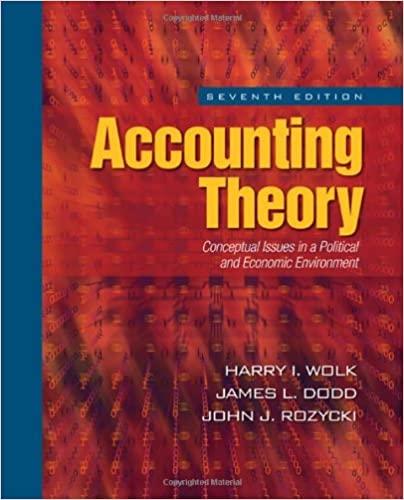Instructions: Complete the two exercises shown below. 1 ) Below are 12 audit procedures. Classify each procedure according to the following types of audit evidence:
Instructions: Complete the two exercises shown below.
1) Below are 12 audit procedures. Classify each procedure according to the following types of audit evidence: (1) physical examination, (2) confirmation, (3) documentation, (4) observation, (5) inquiry of the client, (6) reperformance, and (7) analytical procedure.
Type of Evidence | Audit Procedures |
| 1. Watch client employees count inventory to determine whether company procedures are being followed. |
| 2. Count inventory items and record the amount in the audit files. |
| 3. Trace postings from the sales journal to the general ledger accounts. |
| 4. Calculate the ratio of cost of goods sold to sales as a test of overall reasonableness of gross margin relative to the preceding year. |
| 5. Obtain information about the client's internal controls by asking questions of client personnel. |
| 6. Trace column totals from the cash disbursements journal to the general ledger. |
| 7. Examine a piece of equipment to make sure a recent purchase of equipment was actually received and is in operation. |
| 8. Review the total of repairs and maintenance for each month to determine whether any month's total was unusually large. |
| 9. Compare vendor names and amounts on purchase invoices with entries in the purchases journal. |
| 10. Foot entries in the sales journal to determine whether they were correctly totaled by the client. |
| 11. Make a surprise count of petty cash to verify that the amount of the petty cash fund is intact. |
| 12. Obtain a written statement from the client's bank stating the client's year-end balance on deposit. |
2) Below are 10 documents typically examined during an audit. Classify each document as either internal or external.
Type of Document | Documents |
| 1. canceled checks for payments of accounts payable |
| 2. payroll time cards |
| 3. duplicate sales invoices |
| 4. vendors' invoices |
| 5. bank statements |
| 6. minutes of the board of directors' meetings |
| 7. signed lease agreements |
| 8. notes receivable |
| 9. subsidiary accounts receivable records |
| 10. remittance advices |
Step by Step Solution
There are 3 Steps involved in it
Step: 1

See step-by-step solutions with expert insights and AI powered tools for academic success
Step: 2

Step: 3

Ace Your Homework with AI
Get the answers you need in no time with our AI-driven, step-by-step assistance
Get Started


